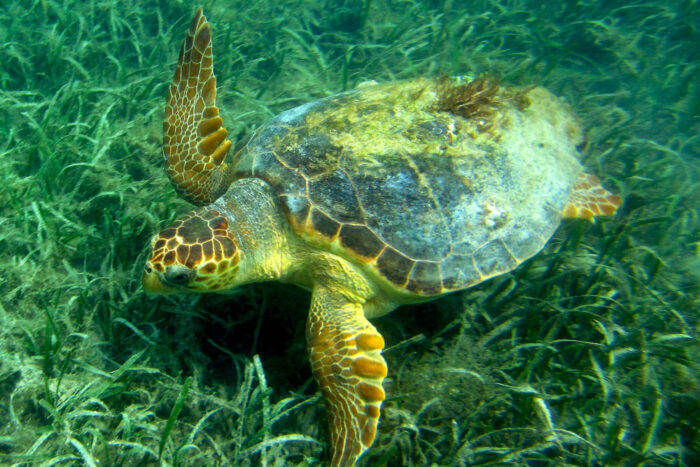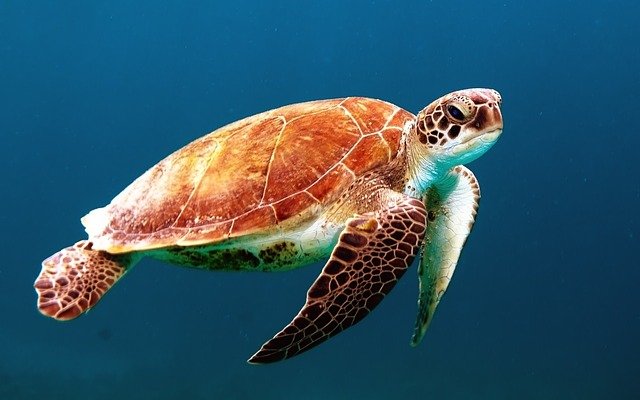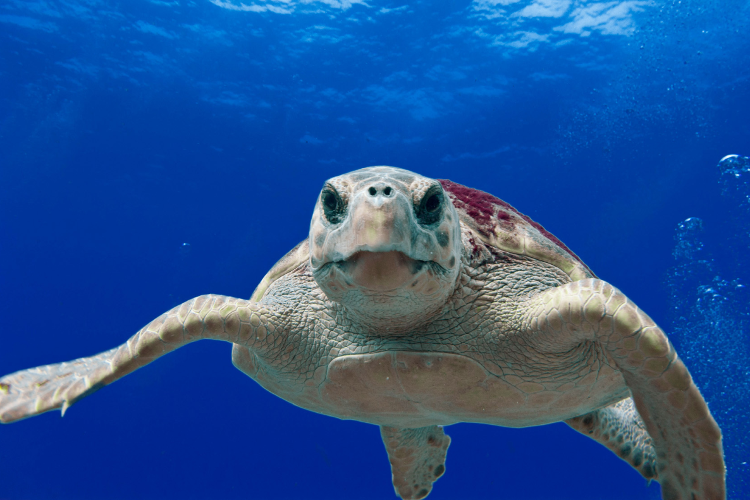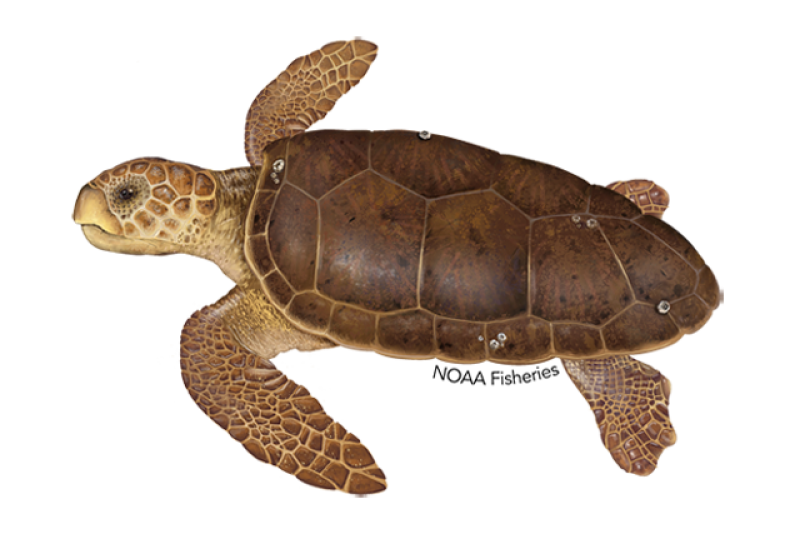So, have you ever wondered what it takes to protect and conserve a species? Well, let me tell you, it’s not an easy task, especially when it comes to the loggerhead sea turtle. These magnificent creatures face numerous challenges in their quest for survival, and in this article, we’re going to delve into the conservation efforts being made to protect them.
The loggerhead sea turtle is one of the most iconic and fascinating species of turtles out there. They are known for their large heads, strong jaws, and reddish-brown shell. These incredible creatures undertake long migrations, swimming thousands of miles to reach their nesting beaches. However, their journey is not without obstacles. Pollution, habitat degradation, and climate change are just some of the challenges they face. But don’t worry, because there are dedicated conservationists out there working tirelessly to protect these turtles and their habitats.
In our upcoming article, we’ll explore the conservation efforts being made to safeguard the loggerhead sea turtle’s future. From the establishment of protected areas to the implementation of fishing regulations, we’ll dive into the strategies being employed to ensure their survival. So, stay tuned and get ready to learn more about these incredible creatures and the challenges they face in their battle for survival in our vast oceans.

Overview of Loggerhead Sea Turtles
Loggerhead sea turtles (Caretta caretta) are fascinating creatures that have captured the attention of marine enthusiasts, conservationists, and researchers around the world. With their distinctive large heads and powerful jaws, they are one of the largest species of sea turtles. Loggerheads are known for their remarkable ability to navigate long distances across the ocean and for their significant ecological role in marine ecosystems.
Physical characteristics of Loggerhead Sea Turtles
Loggerheads have reddish-brown shells, which can grow up to three feet in length. Adult loggerhead sea turtles typically weigh between 200 and 350 pounds, though some individuals have been recorded weighing as much as 1,000 pounds. Their carapace, or upper shell, is thicker and more robust compared to other sea turtle species, providing them with a higher level of protection.
Their large heads house powerful jaws, which they use to crush and consume a variety of prey, including crustaceans, mollusks, and jellyfish. This diet contributes to their unique physical characteristics and distinguishes them from other sea turtle species. Their name “loggerhead” is derived from their large heads and strong jaws.

Habitat and distribution of Loggerhead Sea Turtles
Loggerhead sea turtles have a wide distribution and are found in the Atlantic, Pacific, and Indian Oceans. They are known to spend a significant portion of their lives in coastal areas, including bays, estuaries, and shallow waters. These habitats provide abundant food sources and nesting sites for the turtles.
In the United States, loggerheads are commonly found along the southeastern coasts, particularly in Florida, Georgia, and the Carolinas. However, they can also be found in the Mediterranean Sea, off the coasts of Japan, Australia, and South Africa, among other regions.
Importance of Conservation
Ecological significance of Loggerhead Sea Turtles
The conservation of loggerhead sea turtles is of paramount importance due to their ecological significance. As predators, loggerheads help maintain the balance of marine ecosystems by controlling populations of their prey. They play a crucial role in controlling jellyfish populations, preventing their proliferation, and potential detrimental impacts on marine ecosystems.
Additionally, loggerheads contribute to nutrient cycling in marine environments. Their movements and feeding habits contribute to the dispersion of nutrients and can enhance the productivity of both coral reefs and seagrass beds. This stimulates the growth of various marine organisms and supports the overall health of these ecosystems.
Role in marine ecosystems
Loggerhead sea turtles are also considered a keystone species, meaning their presence has a disproportionately large impact on their natural environment. Their nests provide important shelter and nutrients for other organisms, such as crabs and birds, which benefit from the remains of hatched eggs.
By maintaining the balance of marine ecosystems, loggerhead sea turtles indirectly support an array of other species and contribute to the overall health of the oceans. Protecting loggerhead populations ensures the conservation of these important ecological functions.

Threats to Loggerhead Sea Turtles
Despite their important ecological role, loggerhead sea turtles face numerous threats that jeopardize their survival.
Human activities endangering Loggerhead Sea Turtles
One of the primary threats to loggerhead sea turtles is incidental capture in fishing gear, such as trawls and longlines. Turtles can become entangled in nets or hooked by fishing lines, resulting in injury, drowning, or death. The use of certain fishing methods, such as bottom trawling and gillnets, increases the likelihood of incidental capture and mortality.
Coastal development and habitat destruction also pose significant threats to loggerhead populations. Replacing natural habitats with artificial structures, such as ports and marinas, disrupts nesting sites and confuses hatchlings during their journey to the ocean. The loss of suitable nesting grounds is a major concern for the long-term survival of these turtles.
Poaching and illegal trade of Loggerhead Sea Turtles
Another major threat to loggerheads is the illegal trade of their eggs, meat, and shells. In some regions, loggerhead eggs are harvested for consumption or used in traditional medicine, despite legal protections. The shells of these turtles are also highly sought after for use in the creation of various handicrafts and souvenirs.
Poaching not only directly impacts individual turtles but also reduces the reproductive capacity of populations. Efforts to combat poaching and raise awareness about the importance of protecting loggerheads are essential to their conservation.
Conservation Efforts
Recognizing the importance of protecting loggerhead sea turtles, numerous international conservation initiatives have been implemented.
International conservation initiatives for Loggerhead Sea Turtles
The International Union for Conservation of Nature (IUCN) has listed the loggerhead sea turtle as a vulnerable species, indicating that it is at risk of extinction in the wild if conservation measures are not effectively implemented. This designation has catalyzed efforts to conserve and protect loggerheads on a global scale.
The Convention on International Trade in Endangered Species of Wild Fauna and Flora (CITES) has also provided international regulations to control the trade of loggerhead sea turtles and their products. These regulations aim to eliminate illegal trafficking and reduce the demand for loggerhead products.
Research and monitoring programs
Scientific research plays a critical role in understanding the behavior, ecology, and migration patterns of loggerhead sea turtles. Researchers use various techniques, such as satellite tagging and genetic analysis, to track individual turtles and collect data on their movements and habitat use.
Monitoring programs implemented in nesting areas and feeding grounds provide crucial information on population trends and help identify areas that require conservation intervention. By studying these turtles, scientists can assess the effectiveness of conservation measures and adjust strategies accordingly.

Protecting Nesting Sites
Importance of protecting Loggerhead Sea Turtle nesting sites
Protecting loggerhead sea turtle nesting sites is a fundamental aspect of their conservation. Female loggerheads return to the beaches where they were born to lay their eggs, making the preservation of nesting sites crucial for their survival.
Coastal development and erosion can disrupt nesting habitats, leading to the loss of nesting beaches. Conservation efforts aim to protect these important areas by implementing regulations that restrict any activities that may disturb or damage nesting sites.
Beach management practices
To ensure the successful hatching and emergence of loggerhead sea turtle hatchlings, beach management practices are implemented. This includes creating dark sky policies and reducing artificial lighting near nesting beaches to prevent disorientation of hatchlings. Combining these practices with community awareness campaigns helps raise public support and involvement in protecting nesting sites.
Migration Patterns
Migration routes of Loggerhead Sea Turtles
Loggerhead sea turtles are highly migratory, and understanding their migration patterns is essential for their conservation. Through the use of satellite tracking and tagging studies, scientists have discovered that loggerheads undertake impressive journeys, traveling thousands of miles between their nesting beaches and foraging grounds.
These tracking studies have revealed that loggerheads often migrate across entire ocean basins, with individuals from nesting sites in the United States traveling to feeding areas in the North Atlantic, Gulf of Mexico, and even the Mediterranean Sea. This information allows conservationists to identify critical habitats and implement targeted conservation strategies.
Tracking and satellite tagging studies
Tracking studies involve attaching satellite tags or acoustic transmitters to individual turtles, allowing researchers to monitor their movements in real-time. Data collected from these studies enable scientists to map migration routes, identify important foraging grounds, and gain insights into the behavior and ecology of loggerhead sea turtles.
Satellite tracking studies have revealed that loggerheads exhibit complex foraging strategies, using ocean currents and thermal fronts to their advantage. Understanding these migration patterns is crucial for implementing effective conservation measures and reducing potential threats along their migratory routes.

Conservation Challenges
Despite the ongoing efforts to protect loggerhead sea turtles, several challenges continue to impede their conservation.
Impacts of climate change on Loggerhead Sea Turtles
Climate change poses a significant threat to loggerhead sea turtles and their habitats. Rising sea levels and increased temperatures can alter nesting beaches, affecting the reproductive success of female turtles. Warmer temperatures can also skew the sex ratios of hatchlings, potentially leading to imbalanced populations.
Changes in oceanic conditions, including altered currents and food availability, can disrupt the migration patterns and feeding habits of loggerheads. These changes may impact the survival and reproductive success of individual turtles and ultimately affect population dynamics.
Effects of pollution and habitat degradation
Pollution, including plastic debris, oil spills, and chemical pollutants, poses a significant threat to loggerhead sea turtles. These turtles can become entangled in plastic waste or mistake it for food, leading to ingestion and internal injuries. Additionally, oil spills can contaminate their habitats and directly impact the health of these turtles.
Habitat degradation, particularly in coastal areas, is another major concern for loggerhead populations. Urbanization, deforestation, and pollution contribute to the loss of nesting beaches and foraging grounds, reducing available habitat and fragmenting populations. These threats highlight the need for increased efforts to reduce pollution, promote sustainable development, and restore degraded habitats.
Engaging Local Communities
Educational programs and awareness campaigns
Engaging local communities is vital for the success of loggerhead sea turtle conservation. Educational programs and awareness campaigns help inform residents and visitors about the importance of these turtles and their habitats. Public outreach activities, including guided tours, informative signage, and interactive exhibits, can enhance community involvement and support for conservation efforts.
School programs and workshops aimed at children and young adults play a crucial role in building future stewards of the environment. By instilling a sense of responsibility and understanding at a young age, these programs empower individuals to make a positive impact on the conservation of loggerhead sea turtles and their habitats.
Involvement of fishing communities in conservation
Collaborating with fishing communities is essential for reducing incidental capture of loggerhead sea turtles. By involving fishermen in conservation initiatives, such as the use of turtle excluder devices (TEDs) in fishing gear, conflicts between fishing activities and loggerhead conservation can be minimized.
Fishing communities can also play a crucial role in reporting sightings, strandings, and interactions with loggerheads. Encouraging open communication and providing incentives for reporting can facilitate the collection of valuable data and improve conservation efforts.
Collaborative Conservation Efforts
Partnerships between organizations and governments
Loggerhead sea turtle conservation necessitates collaboration between various stakeholders, including government agencies, non-profit organizations, and research institutions. Partnerships enable the pooling of resources, expertise, and funding to implement effective conservation strategies.
Government agencies often provide legal protection for loggerhead sea turtles and their habitats through the development and enforcement of regulations. Non-profit organizations and research institutions contribute scientific knowledge, conduct research, and help implement conservation measures on the ground. Collaborative efforts between these entities ensure coordinated and comprehensive conservation approaches.
Regional cooperation for Loggerhead Sea Turtle conservation
Regional cooperation is critical for the conservation of loggerhead sea turtles. Different regions share similar conservation challenges and can benefit from sharing knowledge and strategies. Collaborative initiatives, such as the Southeast Regional Sea Turtle Network in the United States, foster communication and coordination among states to develop consistent monitoring and management practices.
International agreements, like the Barcelona Convention in the Mediterranean, promote regional cooperation for the protection of loggerhead sea turtles. These agreements facilitate the exchange of information and resources between countries, working towards a unified approach to conservation and ensuring the long-term survival of these turtles.
Legal Protection and Policies
National and international regulations for Loggerhead Sea Turtle protection
To safeguard loggerhead sea turtles, many countries have enacted national legislation providing legal protection for these turtles and their habitats. These laws typically prohibit the hunting, capture, trade, and disturbance of loggerheads and their nests. National parks and marine protected areas are often designated to preserve critical nesting sites and foraging grounds.
At the international level, the Convention on Migratory Species (CMS) provides a framework for the conservation of migratory species, including loggerhead sea turtles. Through this convention, member countries collaborate to develop and implement conservation measures, including the protection of important habitats and the management of threats.
Laws against illegal trade and poaching
To combat the illegal trade and poaching of loggerhead sea turtles, governments have established regulations and penalties. These laws aim to deter individuals from engaging in activities that harm loggerheads and their populations.
Enforcement agencies work diligently to intercept and prosecute individuals involved in illegal trade, confiscating and destroying illegal products. Public awareness campaigns and community engagement are essential for generating support and encouraging individuals to report illegal activities, further enhancing conservation efforts.
Conservation Success Stories
Successful rehabilitation and release of injured Loggerhead Sea Turtles
Conservation efforts have led to numerous success stories, with injured loggerhead sea turtles being rehabilitated and released back into their natural habitats. Rehabilitation facilities provide medical care and rehabilitation for turtles that have been injured by fishing gear, boat strikes, or pollution.
Once recovered, these turtles are tagged and released, allowing them to continue their natural behaviors in the wild. Rehabilitation programs contribute to population recovery and provide valuable insights into the threats faced by loggerhead sea turtles, guiding future conservation efforts.
Population recovery in certain regions
Conservation initiatives have led to population recoveries in some regions. For example, in Florida, significant efforts have been made to protect nesting habitats, implement sea turtle-friendly lighting practices, and reduce fishing gear interactions. These conservation measures have helped increase nesting populations and overall loggerhead sea turtle abundance.
These successful recoveries serve as a testament to the effectiveness of conservation strategies and inspire further action to ensure the long-term survival of loggerhead sea turtles.
Future of Loggerhead Sea Turtle Conservation
Challenges and opportunities for long-term conservation
The conservation of loggerhead sea turtles faces both challenges and opportunities. Climate change, pollution, and habitat degradation continue to threaten their survival, requiring ongoing efforts to combat these issues. Resource limitations, political obstacles, and human-wildlife conflicts are further challenges that must be addressed.
However, advancements in technology, increased public awareness, and collaboration between stakeholders offer opportunities for the continued conservation of loggerhead sea turtles. The integration of emerging technologies, such as drones and artificial intelligence, can enhance monitoring and data collection efforts. Engaging local communities and incorporating their knowledge and perspectives fosters a sense of ownership and strengthens conservation initiatives.
Importance of ongoing research and monitoring
Continued research and monitoring efforts are paramount for the long-term conservation of loggerhead sea turtles. These efforts allow scientists to track population trends, identify threats, and evaluate the effectiveness of conservation measures. With ongoing research, our understanding of loggerhead biology, behavior, and connectivity between populations can be enhanced.
Monitoring programs provide crucial information on the success of conservation efforts, enabling adaptive management strategies. Long-term, standardized monitoring efforts ensure the availability of data for accurate assessments and contribute to informed decision-making.
Conclusion
The conservation of loggerhead sea turtles is an important endeavor that requires a multi-faceted approach involving international cooperation, community engagement, and scientific research. The incredible ecological role and unique characteristics of loggerheads make them a species deserving of our protection and stewardship. While challenges persist, the collective efforts of governments, organizations, and individuals provide hope for the future of these magnificent sea turtles. By taking action today, we can secure a future where loggerhead sea turtles thrive in our oceans, enriching marine ecosystems for generations to come.